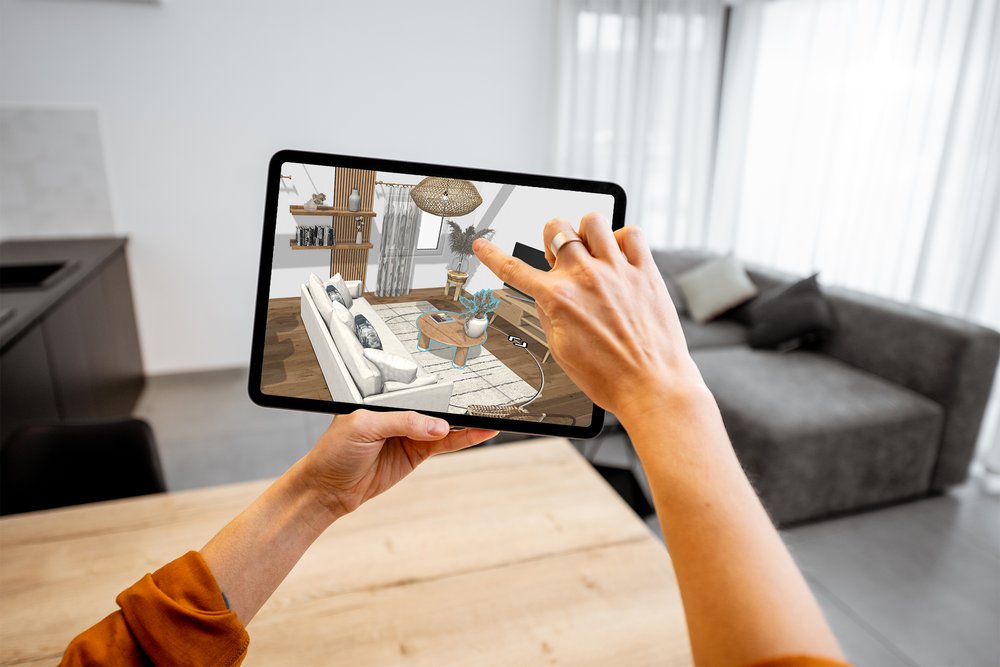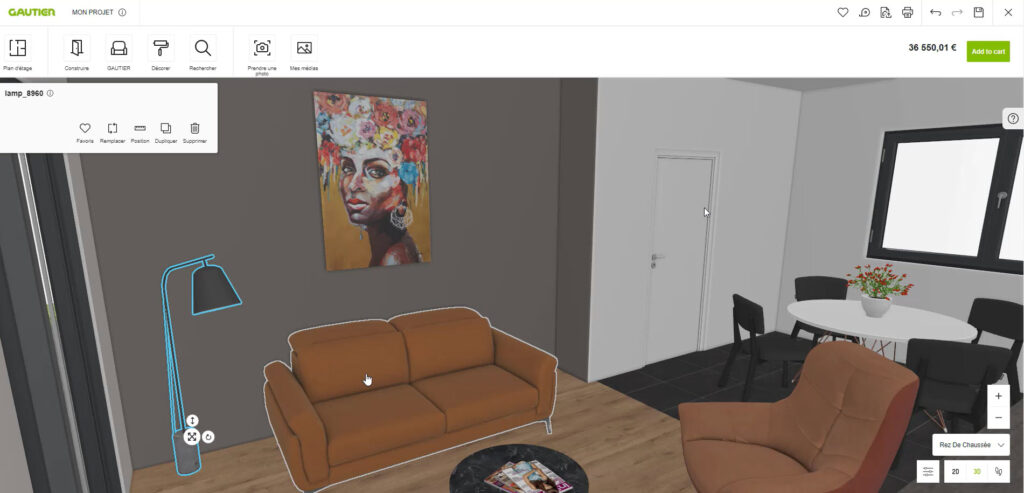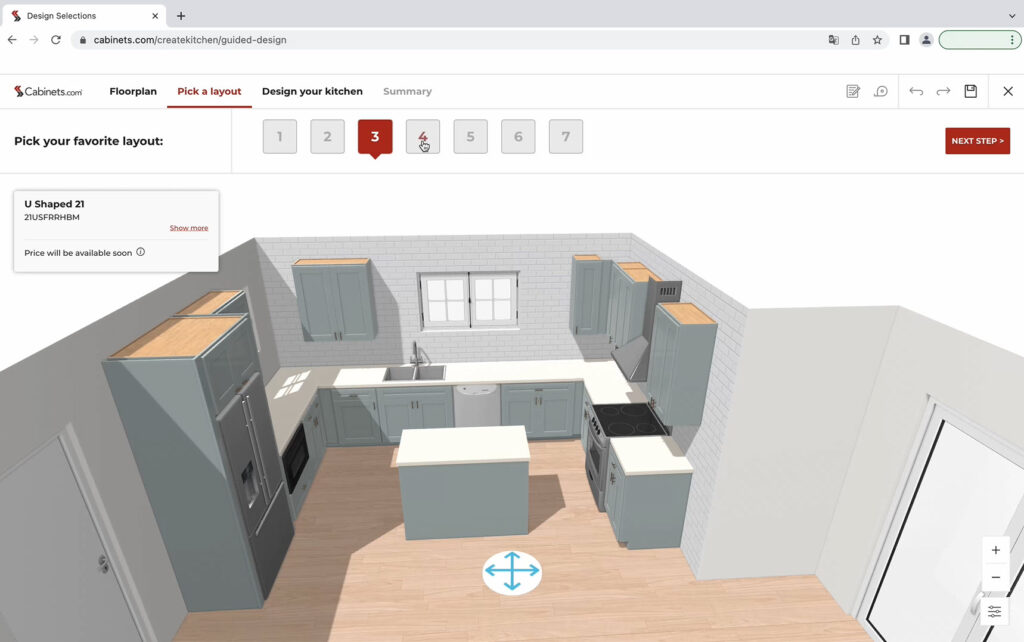Home is where the heart is, as Elvis Presley once sang. But now, the home is much more. It’s a place for rest and relaxing with our families, but also for working, schooling, exercising and more. So it’s no wonder that we’re investing more in home spaces – and getting more deeply involved in the interior design process.
In the early stages of the COVID-19 pandemic, when over half of the world’s population was in some form of lockdown, home goods spending surged. In the US, the home improvement market jumped by more than 20% in 2020, to almost US$500 billion, and it is expected to exceed US$600 billion by 2025, according to Statista. In the UK, sales of paint and building materials in the UK increased by 47.1% and 31.7%, respectively. Furniture sales rose too – home goods supplier Wayfair saw total net revenue increased by 83.7% to US$4.3 billion (year over year).
Alongside this rapid growth, advancements in digital technologies, such as 3D visualization, 3D planning, and 3D product configuration, are transforming the interior design experience. The technology gives consumers a preview of the ‘real-world’ impact via their device screens, providing a highly personalized buying experience. This is why furniture, kitchen and DIY retailers are investing more and more in such digital solutions.
Rethinking home interiors
The pandemic not only prompted investment in the décor of our homes, but forced people to re-evaluate their use. Families used their homes for everything from homeschooling to remote working, virtual socializing and online gym classes. Flexible spaces that could be quickly reconfigured to suit multiple purposes replaced the once popular open plan living areas, according to the Society of British & International Interior Design.
“Being stuck at home meant that a lot of people had a bit more money in their pocket than normal and the capacity to be able to work on their homes,” said retail influencer Steve Collinge, the managing director of market intelligence agency Insight Retail Group and executive editor of Insight DIY. “So, we found that most people were redesigning kitchens, putting fresh paint on their walls and updating their storage, all of which played a significant role in accelerating consumer demand for furniture retailers.
“During the pandemic, we also saw the need for homes to become multi-purpose because open plan was suddenly no longer relevant. So, what you found then was retailers introducing products such as room dividers to help section off different areas of their home. There were also more people designing the interior of garden rooms to become offices, gyms or playrooms.”
Multifunctional furniture, such as wall beds and sofas with storage, also improved living spaces. According to Research Nester, the multifunctional furniture market is expected to grow at a compound annual growth rate of 7.5% to reach US$13.2 billion over the forecasted period of 2017-2027. This is due to newly built smaller homes in populous cities, as well as the impact of the pandemic. Wall beds, for example, create extra space for working or home exercise, as do innovative storage solutions under sofas, tables and other items.
Personalizing the design experience
As the pandemic continued and design trends shifted, so too did the ways in which furniture and decor retailers and kitchen retailers delivered their services. Unable to welcome customers into physical stores, retailers introduced virtual consultations with the help of digital technologies and communication platforms like Zoom and Microsoft Teams. These virtual meetings continue to be popular after the lifting of lockdowns, making the interior design process more accessible and personalized for both customers and designers, and also improves the retailer’s drive-to-store strategy.
“Visiting showrooms can be quite a cold experience but when designers provide online consultations, clients are able to take the camera and show the space they want to improve,” Collinge said. “Suddenly, the consultant is invited into the customer’s home and the design process becomes a much closer, more intimate and a collaborative experience.”
Virtual meetings encourage customers to be more honest about their project goals. Rather than sitting with a designer and struggling to describe the work they want to do, customers can use their device’s camera to show the consultant their existing kitchen, for example, and say “look, this is how terrible it is.” Consultants then can share in the customer’s vision and understand their design choices better. Consumers start their project on-line and they can finalize it in store or in a showroom, increasing traffic from web to store.

Putting the consumer in the designer’s shoes
Have you ever refrained from buying a piece of furniture in case it won’t fit in your chosen room, or because you’re worried that it won’t suit the style of your home? 3D visualization software, 3D planning solutions and 3D product configurators removes that level of uncertainty so that customers can see the products in their own home before purchasing. Whether it’s a desk for a home office space or a rowing machine in a basement, 3D and digital solutions are contributing to the rise of multi-purpose spaces.
DIY retailers and kitchen specialists also are deploying 3D planners and 3D visualization software to fully digitalize the whole design process and enable customers to see detailed models of their designed room or kitchen, with products in place, before purchasing anything. This personalized experience empowers consumers to take control of their interior design projects from the comfort of their own homes, while making it easier to control costs.
One example is French-based furniture supplier Gautier, which rolled out a consumer design service based on the HomeByMe Furniture and Décor Planner. Gautier’s customers create virtual layouts of the rooms they want to redesign using products from its online catalogue. They then can share saved projects with designers and collaborate to finalize room layouts and then place furniture orders. Statistics showed that 6,000 customer design projects and 8,200 high-resolution renderings of room layouts were created and saved to the HomeByMe solution within the first year. Helping customers to personalize their furniture buying experience led to increased sales for the retailer.
“Today, 90% of our customers visit our website before they visit our showrooms,” said David Soulard, director of Gautier. “We want to share and collect as much information as possible online so that they feel comfortable with the brand. Then, when they come to the store, we want to make it as easy as possible for them to finalize their project with our store associates.”

Another example is DOMETVIE, a company specializing in home solutions and services that help people with reduced mobility to stay in their homes safely for as long as possible. The independent retailer uses the HomeByMe Kitchen Planner to enable its customers to begin kitchen design projects themselves in 3D with the support of its 3D design experts so they feel informed and reassured in their kitchen choices.
“Our 3D design solution enables our account managers to offer the best configuration for our customers that allows them to visualize the new layout of their homes and the accessibility equipment that’ll go with it,” said Mickael Cohen, co-founder and director at DOMETVIE, which rolled out its online design service in 2021. “Customers’ homes can be recreated in 3D using exact measurements and then be populated with DOMETVIE products. The solution was just what we needed to help launch our kitchen range and digitalize our complex value chain.”
Transforming the shopping journey
Online consultations and 3D visualization solutions empower customers to play a more active role in the interior design process and shorten the shopping journey. According to Collinge, it is possible to reduce the timeframe for purchasing a new kitchen from an average of nine months to just two or three weeks. With consumers able to choose whether to shop from home or visit their nearest stores and showrooms, sales and loyalty are boosted in the process.
“What has been needed for many years is an effective design tool that allows customers at the very start of the kitchen purchase process to quickly and easily design their own kitchen at home, the way they want it, before engaging directly with a kitchen consultant,” Collinge said. “Although most customers may still want to see, touch and feel the products before they actually make the purchase, moving everything online is almost making the process of going to the store redundant. The entire process is transforming as more products become easier to find online.”

US-based cabinet retailer Cabinets.com runs an entirely online business model, meaning its personalized design tool is even more important for customers. “We saw improved engagement from day one of deploying our HomeByMe 3D planning solution and higher levels have continued,” said SVP of Sales Bill McIntosh. “The solution, which we’ve rebranded as ‘Create A Kitchen’ on our site, is clearly providing value to our customers.
“Even in the early stages, it allows users to shop around, build their budget, and decide on color and style preferences, all from within the comfort of their own homes. It has encouraged engagement and when customers are ready, they can submit project plans to our designers with the reassurance that they have made the best decision for themselves.
“Not only does this personalize the purchase process, but it also helps our designers because all information from the planner tool is sent directly to them. This means that they are working with more detailed information on where to start processing customer design requests.”
The foundations for success
The demand for personalized interior design is here to stay. “In a post-COVID world, more furniture and kitchen retailers are willing to try new ways to engage with consumers,” Collinge said. “Once people can clearly see an end result, that’s when they’re more likely to play around with their interior spaces.
“A retailer that can provide personalization, a fast and easy purchase and delivery process, visibility of pricing and the ability for customers to cost-out their own projects will be the most successful.”
Collinge believes the next step is supplier comparison. “The ideal interior design solution will allow customers to build their new rooms on 3D software and then price it across several different retailers so they can choose either the most affordable retailer or the one that has all components in stock.”
The pandemic forced people to rethink all aspects of their life, and businesses to adapt. Many of those changes – including the way we shape our homes – are here to stay.

